|
|
|
|
The propensity of bamboo to split as it experiences changes in temperature and humidity is an issue that has confronted shakuhachi players for centuries. While bamboo is one of the world's strongest natural fibers along the axis of its grain, it's unique cellular structure provides little cohesion between those fibers. That, combined with bamboo's columnular shape, sets up a situation in which its inner and outer walls swell and contract at differing coefficients of expansion, sometimes causing the culm to split.
Shakuhachi taken from the relatively stable, humid atmosphere of Japan to the wide variety of climactic conditions found in North America, Europe and Australia are particularly vulnerable. Bamboos are not especially happy in the dry hot (and cold) conditions found at high altitudes nor in urban environments controlled by central heating and air conditioning.
While the precision cast bore technology along with research and experiments I have conducted in stabilization of bamboo have done much to inhibit cracking, only the time-tested method of tightly binding the flute will insure against this possibility. Tai Hei Shakuhachi is the only instrument of its kind to offer a lifetime guarantee against splitting if bound at the time of purchase.
Objections to binding are usually based on aesthetic considerations, some folks preferring the natural beauty of the bamboo to be uninterrupted by obtrusive black bands. A few players do not like the feel of the bindings, sitting above the level of the bamboo surface, on their fingers. These objections are most often overcome with practical considerations and the proven effectiveness of binding to protect again splitting.
STANDARD BINDING - BLACK
A low-cost, effective way to protect the shakuhachi against cracking. High-tensile, small diameter woven binding is evenly placed at nine or ten critical locations along the surface of the flute. [OP-1]
INLAID BINDING - BLACK
Standard Binding that is recessed in shallow grooves cut into the bamboo. The binding does not protrude past the outside surface of the bamboo providing a smooth, clean feel for the player. [OP-2]
 |
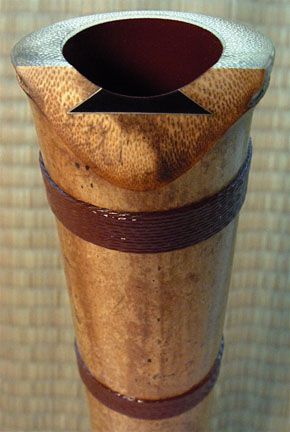 |
 |
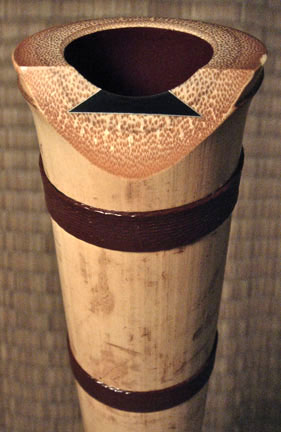 |
 |
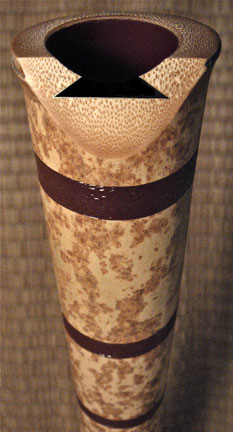 |
 |
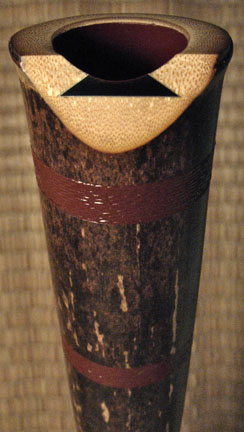 |
TRADITIONAL INLAID RATTAN BINDING
This is the classical method used by traditional makers in Japan. A channel is first chiseled in the bamboo. Binding is tightly wrapped inside this groove which is then glued and carefully filled to within a fraction of a millimeter from the surface of the bamboo. This space is inlaid with finely-split rattan evenly to the outside of the instrument. The visual effect of the rattan is quite beautiful and the deep inlaid binding provides added tensile strength to counteract any movement of the bamboo. [OP-3]
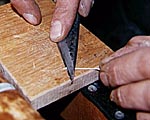 |
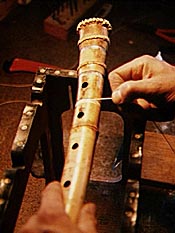 |
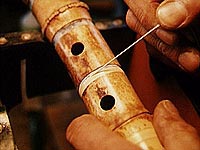 |